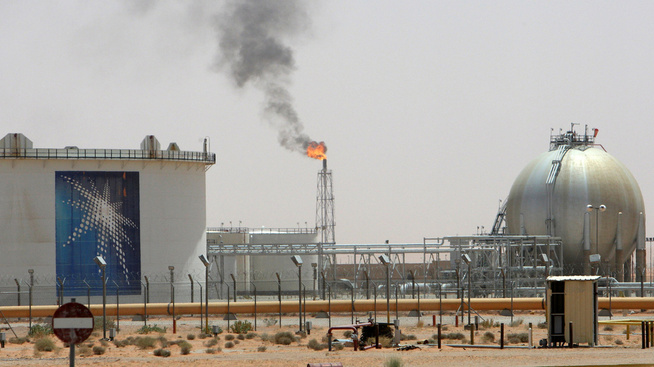– All price wars have an end. I think this goes towards the end, ” says oljeanalytiker Trond Omdal at Pareto to E24.
When Opec countries gather for informal meeting in Algeria on Wednesday, the pressure is huge on if they agree a cut in oil production.
the price of oil is markedly down since the summer of 2014 – and overproduction and a market that is flowing over of the oil is blamed for the price fall. Sankthansaften 2014 the price was well 115 dollars, now it is 45 dollars.
From producing a few hundred thousand barrels a lot, is oljeoverfloden now tripled.
the Pumps in Russia fully mobilised, and Iran have lifted the production up to previous levels after the sanctions were raised in 2012.
There has long been talk about that oljekartellet Opec, along with other selected oil producing countries, to go together and arrange a produksjonskutt – to get the prices up.
But to talk about produksjonsfrys is no longer enough, ” says Nordea’s oljeanalytiker Thina Saltvedt.
– There is simply too much oil in the market. They must agree on a proper cut in order that it really should monne. In each case, on the one a million barrels, ” she says to E24.

Reuters: Saudi Arabia offers “oljedeal”
Risk oljeprisstup
But can they agree about it?
A Bloomberg-questioning made earlier this week says no. Only 2 out of 23 economists thought the Algeria meeting would end with an agreement.
The last messages indicate though that things are on the slide. Right before the weekend notified Reuters that saudiene has stretched out his hand to Iran. The agreement they offer is reportedly lowering its own production, Iran freezes its.
Friday evening, Bloomberg that Saudi Arabia has no expectations of any deal on the Opec meeting which is held next week, citing an anonymous source.
It is thus open as to what will happen this coming Wednesday.
” It will be a thrilling encounter. I think they are nearing an agreement. If not finished, nailed to a week, so that they will have a framework that utbroderes with the details in October or november, says Omdal.
And if not?
– If the meeting, once again, ends in complete conflict, will brentoljen fall down to the low 40′s again.
– Will not give Iran a “free pass”
The last produksjonstallene shows that Iran is located on 3.6 million barrels daily. It is close to around the levels before atomsanksjonene was introduced in 2012. Omdal don’t think the country is in reality manages to produce a little more oil in the short term.
Thus, Saudi Arabia’s proposal produksjonsfrys be easy to swallow for iranians.

HOLD NOT TO FREEZE: Opec countries need to agree on the produksjonskutt, says oljeanalytiker Thina Saltvedt, Nordea Markets.
But for saudiene is the political important that Iran not be given a “free pass”, but committed. The two countries are bitter enemies, says the expert.
With the agreement between Saudi Arabia and Iran, much of the work to be done. But it remains to be seen how much Saudi Arabia actually cut.
– Saudi Arabia is the key. They produce the most, and have historically been the country that contributes most when it is produksjonskutt.

Shippingkjempe change strategy – must purchase in order to grow
How can the cuts divide
at the same time, overproduction now so great that saudiene no longer can balance the market just by cutting 0.5 million barrels seasonally, as they also did last winter, even without an agreement, says Omdal.
in other words, needed help from several countries. Omdal outlines that a cut-agreement might appear as follows:
- Saudiene cuts with a half a million barrels
- Iran agrees to freeze production
- Abu Dhabi, and Kuwait cuts to 200,000 barrels each
- Qatar cuts 50,000 barrels
– When you are close close to a total reduction of one million barrels, which will be sufficient, even with the latest week increase in the production in Nigeria and Libya, says Omdal.
To cut even more in an attempt to get oil prices further up, can quickly punish themselves, says Saltvedt at Nordea.
the Case continues below the advertisement.
– A cut of 1.5 to two million barrels can send oil prices up $ 60 barrel, but when will us skiferprodusenter lured into, ” she says.
Five reasons to Opec-agreement
Oljeanalytiker Trond Omdal at Pareto believes there are several arguments for an agreement on produksjonskutt come in place soon. Here are the five:
1. It is easier to commit to the cuts now. Opec countries are close to maksproduksjon, and has increased overall production by more than 2 million barrels since priskrigen was initiated.
2. Global oil investments is down close to 50 per cent in two years, and production outside OPEC is falling
3. Two years of price wars have cost much financially. Saudi Arabia’s utenlandsreserver fell by close to USD 200 billion – according to the IMF, they have break-even for the state budget at 70 dollars a barrel.
4. A new failure go on the credibility resolved for the saudiene, who has worked a long time to get to an agreement.
5. And a consensus can restore oljekartellets relevance and show that cooperation is not dead yet, after all the freeze-attempts have ended in failure.
No comments:
Post a Comment